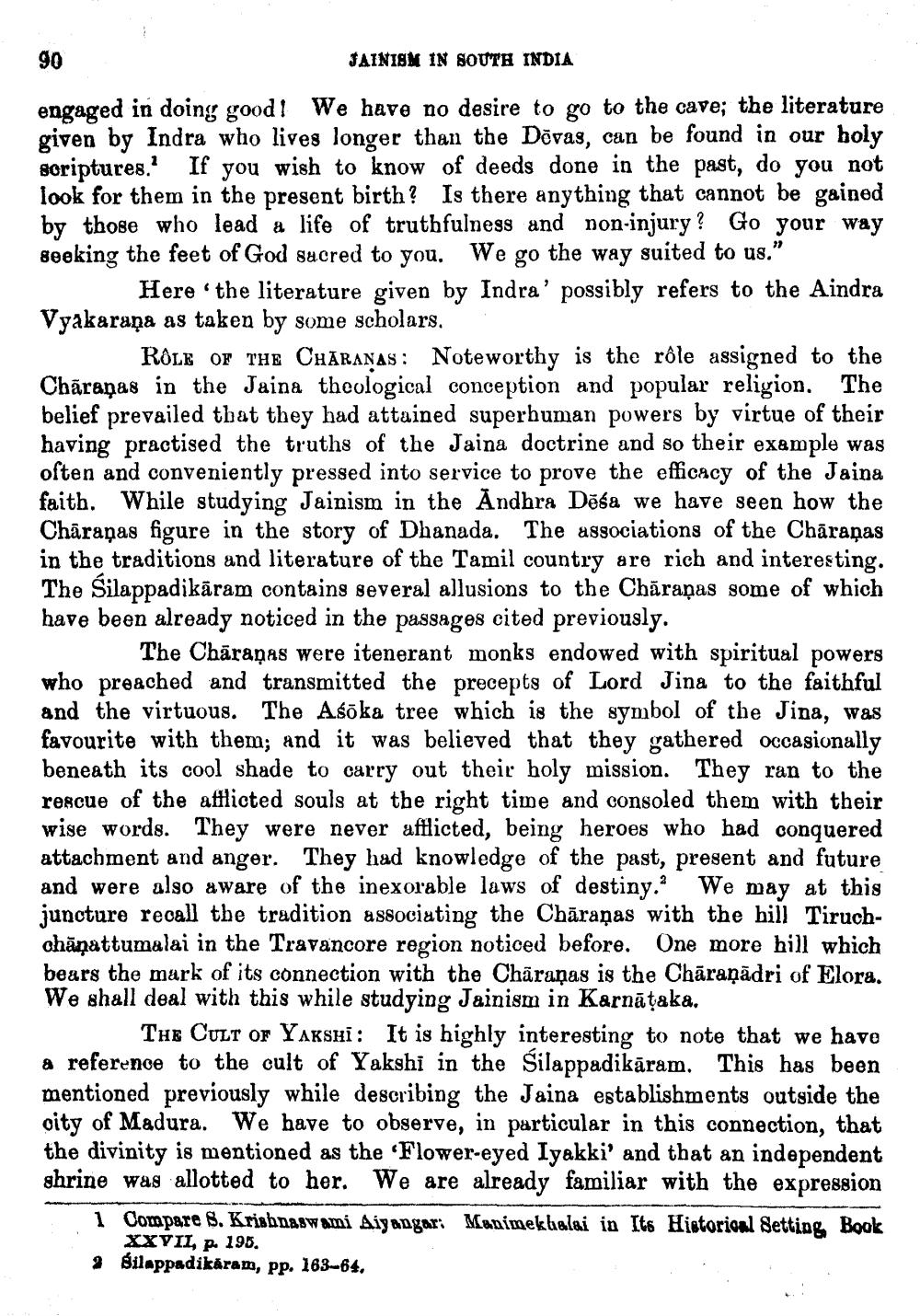________________
JAINISM IN SOUTH INDIA
engaged in doing good! We have no desire to go to the cave; the literature given by Indra who lives longer than the Dõvas, can be found in our holy soriptures. If you wish to know of deeds done in the past, do you not look for them in the present birth? Is there anything that cannot be gained by those who lead a life of truthfulness and non-injury? Go your way seeking the feet of God sacred to you. We go the way suited to us."
Here the literature given by Indra' possibly refers to the Aindra Vyakaraña as taken by some scholars.
ROLE OF THE CHĀRANAS: Noteworthy is the rôle assigned to the Chāraņas in the Jaina theological conception and popular religion. The belief prevailed that they had attained superhuman powers by virtue of their having practised the truths of the Jaina doctrine and so their example was often and conveniently pressed into service to prove the efficacy of the Jaina faith. While studying Jainism in the Andhra Dēśa we have seen how the Chāraņas figure in the story of Dhanada. The associations of the Chāraņas in the traditions and literature of the Tamil country are rich and interesting. The Silappadikāram contains several allusions to the Chāraṇas some of which have been already noticed in the passages cited previously.
The Chāraņas were itenerant monks endowed with spiritual powers who preached and transmitted the precepts of Lord Jina to the faithful and the virtuous. The Asöka tree which is the symbol of the Jina, was favourite with them; and it was believed that they gathered occasionally beneath its cool shade to carry out their holy mission. They ran to the rescue of the afflicted souls at the right time and consoled them with their wise words. They were never afflicted, being heroes who had conquered attachment and anger. They had knowledge of the past, present and future and were also aware of the inexorable laws of destiny. We may at this juncture recall the tradition associating the Chāraņas with the hill Tiruchchāņattumalai in the Travancore region noticed before. One more bill which bears the mark of its connection with the Chāraņas is the Chāraņādri of Elora. We shall deal with this while studying Jainism in Karnāțaka.
The Cult of Yakshi: It is highly interesting to note that we have a reference to the cult of Yakshi in the Silappadikāram. This has been mentioned previously while describing the Jaina establishments outside the city of Madura. We have to observe, in particular in this connection, that the divinity is mentioned as the 'Flower-eyed Iyakki' and that an independent shrine was allotted to her. We are already familiar with the expression
1 Compare 8. Krishnaswami Aiyangar: Manimekalai in Its Historical Setting Book
XXVII, p. 190. * Silappadikáram, pp. 163-64.




